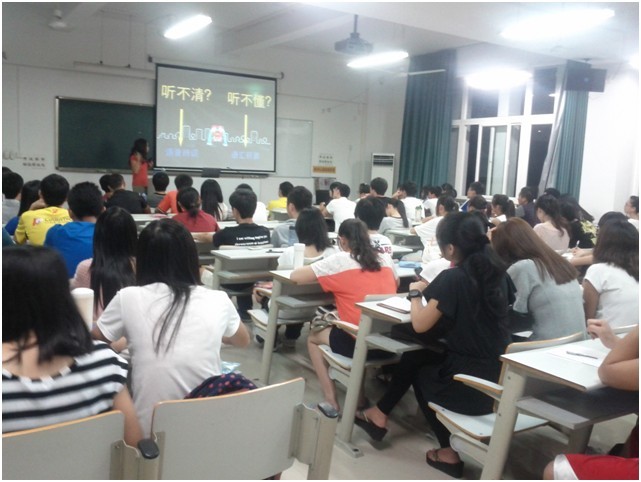 返回
教育头条
返回
教育头条

英语四级阅读练习题技巧分享 英语四六级报名
小编为备考的同学们整理了2019年12月英语四级阅读练习题(9),希望可以为大家带来帮助,预祝大家高分通过。
The greatest recent social changes have been in the lives of women. During the twentieth century there has been a remarkable shortening of the proportion of a woman's life spent in caring for the children. A woman marrying at the end of the nineteenth century would probably have been in her middle twenties ? and would be likely to have seven or eight children, of whom four or five lived till they were five years old. By the time the youngest was fifteen, the mother would have been in her early fifties and would expect to live a further twenty years, during which custom, opportunity and health made it unusual for her to get paid work. Today women marry younger and have fewer children. Usually a woman's youngest child will be fifteen when she is forty-five years and is likely to take paid work until retirement at sixty. Even while she has the care of children, her work is lightened by household appliances and convenience foods.
This important change in women's life-pattern has only recently begun to have its full effect on women's economic position. Even a few years ago most girls left school at the first opportunity, and most of them took a full-time job. However, when they married, they usually left work at once and never returned to it. Today the school leaving age is sixteen, many girls stay at school after that age, and though women tend to marry younger, more married women stay at work at least until shortly before their first child is born. Very many more afterwards return to full-or-part-time work. Such changes have led to a new relationship in marriage, with the husband accepting a greater share of the duties and satisfactions of family life, and with both husband and wife sharing more equally in providing the money, and running the home, according to the abilities and interests of each of them.

21. According to the passage, it is now quite usual for women to_______. A. stay at home after leaving school B. marry men younger than themselves C. start working again later in life D. marry while still at school
22. We are told that in an average family about 1900_______. A. many children died before they lived to more than five B. seven or eight children lived to be more than five C. the youngest child would be fifteen D. four or five children died when they were five
23. Many girls, the passage claims, are now likely to_______. A. give up their jobs for good after they are married B. leave school as soon as they can C. marry so that they can get a job D. continue working until they are going to have a baby
24. One reason why a woman today may take a job is that she_______. A. is younger when her children are old enough to look after .themselves B. does not like children herself C. need not worry about food for her children D. can retire from family responsibilities when she reaches sixty
25. Nowadays, a husband tends to_______. A. play a greater part in looking after the children B. help his wife by doing much of the housework C. feel dissatisfied with his role in the family D. take a part-time job so that he can help in the home
21. C 22. A 23. D 24. A 25. B
The greatest recent social changes have been in the lives of women. During the twentieth century there has been a remarkable shortening of the proportion of a woman's life spent in caring for the children. A woman marrying at the end of the nineteenth century would probably have been in her middle twenties ? and would be likely to have seven or eight children, of whom four or five lived till they were five years old. By the time the youngest was fifteen, the mother would have been in her early fifties and would expect to live a further twenty years, during which custom, opportunity and health made it unusual for her to get paid work. Today women marry younger and have fewer children. Usually a woman's youngest child will be fifteen when she is forty-five years and is likely to take paid work until retirement at sixty. Even while she has the care of children, her work is lightened by household appliances and convenience foods.
This important change in women's life-pattern has only recently begun to have its full effect on women's economic position. Even a few years ago most girls left school at the first opportunity, and most of them took a full-time job. However, when they married, they usually left work at once and never returned to it. Today the school leaving age is sixteen, many girls stay at school after that age, and though women tend to marry younger, more married women stay at work at least until shortly before their first child is born. Very many more afterwards return to full-or-part-time work. Such changes have led to a new relationship in marriage, with the husband accepting a greater share of the duties and satisfactions of family life, and with both husband and wife sharing more equally in providing the money, and running the home, according to the abilities and interests of each of them.

21. According to the passage, it is now quite usual for women to_______. A. stay at home after leaving school B. marry men younger than themselves C. start working again later in life D. marry while still at school
22. We are told that in an average family about 1900_______. A. many children died before they lived to more than five B. seven or eight children lived to be more than five C. the youngest child would be fifteen D. four or five children died when they were five
23. Many girls, the passage claims, are now likely to_______. A. give up their jobs for good after they are married B. leave school as soon as they can C. marry so that they can get a job D. continue working until they are going to have a baby
24. One reason why a woman today may take a job is that she_______. A. is younger when her children are old enough to look after .themselves B. does not like children herself C. need not worry about food for her children D. can retire from family responsibilities when she reaches sixty
25. Nowadays, a husband tends to_______. A. play a greater part in looking after the children B. help his wife by doing much of the housework C. feel dissatisfied with his role in the family D. take a part-time job so that he can help in the home
21. C 22. A 23. D 24. A 25. B
英语四级阅读练习题技巧分享 英语四六级报名,如果你喜欢这篇文章,请将其保留版权转载。我的微信号(18560125702)欢迎来咨询,10年教培行业工作经验,如果你在四级六级考试方面有疑问,请与我联系,我将为您提供全面专业的选课帮助。返回教育宝头条
【免责声明】本文仅代表作者本人观点,与教育宝无关。教育宝对文中陈述、观点判断保持中立,不对所包含内容的准确性、可靠性或完整性提供任何保证。请读者仅作参考,特此声明!





